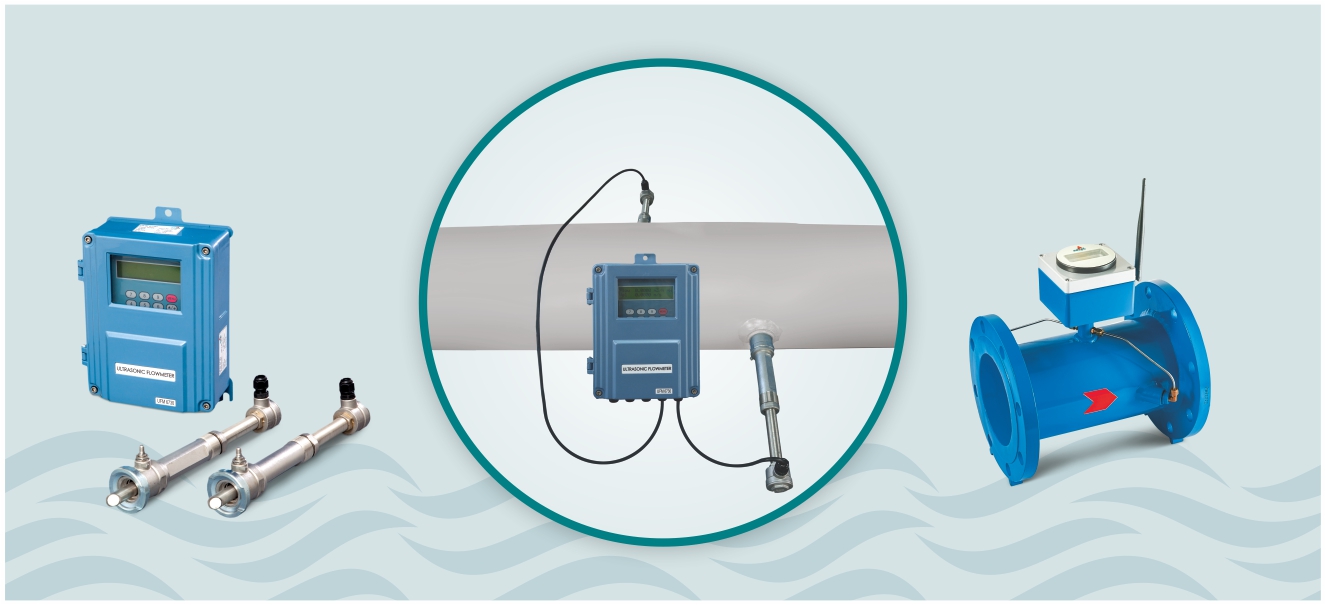Blog
How Ultrasonic Flowmeter works
Working Principle :
The Transit Time Flowmeter utilises two transducers that function as both, ultrasonic transmitters and receivers. The transducers are clamped on the outside of a closed pipe or inserted in the pipeline by using an isolating ball valve assembly at a specific distance from each other. Transit Time Flowmeters measure the time it takes for an ultrasonic signal transmitted from one sensor to cross a pipe and be received by a second sensor. Upstream and downstream time measurements are compared. With no flow, the transit time would be equal in both directions.
With flow, sound will travel faster in the direction of the flow and slower against the flow. The liquid velocity (V) inside the pipe can be related to the difference in time of flight (rt) through the following equation:

The induced voltage is not affected by the physical properties of liquids like temperature, viscosity, pressure, density and conductivity as long as the conductivity of the measured liquid is above the minimum threshold level. For reliable measurement, the pipe must be completely full of liquid.
The electromagnetic field coil assembly is excited by pulsed DC technique which eliminates the interfering noise and provides automatic zero correction.
Write to us at: digital@adeptfluidyne.com
Latest Blogs













